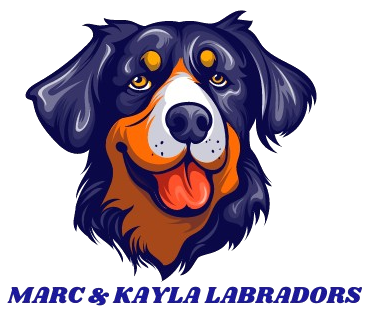Health Testing
"This is what sets us apart from the rest."
Testing sets us apart from other breeders!
We conduct preliminary Orthopedic Foundation for Animals (OFA) evaluations on all our breeding dogs, followed by another evaluation when they reach two years of age. OFA involves X-rays taken by your local veterinarian and sent in for assessment to certify whether the hips are classified as “Excellent,” “Good,” “Fair,” or “Dysplastic.” This rigorous process is aimed at ensuring we’re cautious and avoid breeding dogs that might produce offspring with hip issues. Despite the occasional occurrence of hip problems even in dogs with excellent ratings, we remain committed to responsible breeding practices by rigorously testing our dogs. We strive to have all our dogs certified as “Good” or above, and we’re ready to provide this information upon request.

- Investing in a health-tested puppy may seem like a bigger upfront cost, but it pays dividends in the long term with a healthier, happier companion who’ll be by your side for many years. Our goal is to give each puppy the best possible start in life because they’re not just pets; they’re destined to be your loyal friend for the next decade or more.
- From day one, our puppies are showered with love, affection, and socialization. They’re held, cuddled, and exposed to various stimuli, ensuring they grow into well-rounded, confident dogs. We believe in fostering positive interactions with people of all ages, as well as with other dogs, to instill good behavior and a friendly demeanor.
- We encourage prospective families to visit and bond with their chosen puppy before taking them home. This initial meeting allows the puppy to become familiar with your scent, easing their transition into their new environment. Additionally, we maintain strict hygiene protocols, asking visitors to remove shoes and wash hands before handling the puppies, ensuring their health and safety.
- Your relationship with us doesn’t end after you take your puppy home. We’re here to support you every step of the way, whether you have questions, concerns, or simply want to chat. We prioritize open communication and promise to respond promptly to emails and phone calls, offering guidance and assistance whenever you need it.
- When you become part of our extended family by bringing one of our puppies into your home, you can rest assured that we’re committed to their well-being for life. If circumstances ever arise where you can no longer care for your dog, we implore you to bring them back to us rather than surrendering them to a shelter. We’ll gladly welcome them back into our care, ensuring they find a loving home where they’ll be cherished just as they were with you.
What Is Disease Testing ?
AtMarc & Kayla Labradors, we prioritize extensive testing to ensure that we provide you with the highest quality Labrador puppies available. We believe every puppy deserves the best possible start in life. Our breeding program focuses on producing puppies with optimal health and calm temperaments, resulting in the most exceptional companions you’ll find anywhere.

We give a lifetime guarantee that your puppy will NEVER SUFFER from any of the following 7 diseases!
PRA stands for Progressive Retinal Atrophy.
Progressive Retinal Atrophy (PRA) is a collective term encompassing a range of diseases that cause the gradual degeneration of the retina, ultimately resulting in vision loss. In Labradors, a specific form of PRA known as prcd (Progressive Rod-Cone Degeneration) is prevalent. This condition initially manifests as a decline in night vision, progressing to complete blindness over time. Typically, the onset of prcd occurs between the ages of 3 and 5 years in affected dogs.
RD/OSD stands for Retinal Dysplasia-retinal folds (RD).
Retinal folds pose a significant risk of blindness in dogs if left untreated, often necessitating surgical correction. Meanwhile, OculoSkeletal Dysplasia (OSD) presents a grave inherited syndrome characterized by severe skeletal malformations, such as shortened limbs (dwarfism). Additionally, affected dogs may experience early-onset blindness due to a widespread retinal malformation, leading to partial or complete retinal detachment and the development of cataracts.
HNPK Hereditary Nasal Parakeratosis
Nasal parakeratosis is an inherited condition that affects the noses of Labrador Retrievers. Typically emerging between 6 to 12 months of age, afflicted dogs develop dry, rough, gray to brown crusts on the nasal tip, occasionally accompanied by painful cracks. In some instances, lesions extend to the surrounding haired area. Affected dogs are susceptible to superficial bacterial infections, and their noses may progressively lose pigmentation. Despite this condition, dogs generally maintain good overall health. Symptoms of nasal parakeratosis often fluctuate in severity throughout the dog’s life. While manageable, consistent topical treatment is necessary to prevent excessive nasal crusting from recurring.

EIC stands for Exercise-Induced Collapse.
A debilitating genetic condition, Exercise-Induced Collapse (EIC) results in the affected dog experiencing loss of muscle control after strenuous exercise. This disorder stems from a mutation in the Dyamin 1 gene. EIC operates on a recessive inheritance pattern, meaning that for the disease to manifest, the dog must inherit two copies of the mutation. Symptoms typically emerge between 5 months and 3 years of age in affected dogs.
CNM stands for Centronuclear Myopathy
Puppies are born apparently normal, however, it quickly becomes evident that there is a problem. The puppy will often not gain weight due to decreased muscle tone in the esophagus. By age 2 to 5 months the disease has usually progressed to display the full range of symptoms, including a loss of muscle tone and control, an awkward gait and extreme exercise intolerance. This condition gets worse in cold conditions. There is no cure for CNM, although the dog can live a normal life span, their muscle tissue will never develop properly.
HNPK Hereditary Nasal Parakeratosis
Nasal parakeratosis is an inherited condition that affects the noses of Labrador Retrievers. Typically emerging between 6 to 12 months of age, afflicted dogs develop dry, rough, gray to brown crusts on the nasal tip, occasionally accompanied by painful cracks. In some instances, lesions extend to the surrounding haired area. Affected dogs are susceptible to superficial bacterial infections, and their noses may progressively lose pigmentation. Despite this condition, dogs generally maintain good overall health. Symptoms of nasal parakeratosis often fluctuate in severity throughout the dog’s life. While manageable, consistent topical treatment is necessary to prevent excessive nasal crusting from recurring.
DM stands for Degenerative Myelopathy
Degenerative myelopathy is a progressive ailment, characterized by a gradual weakening of dogs over a span of four to six months post-diagnosis. Initially, this condition predominantly affects the hind legs, but muscle weakness can extend to the front legs as well. Affected dogs may experience frequent stumbling as nerve damage progresses, ultimately leading to loss of bladder and bowel control. In the advanced stages of the disease, symptoms of weakness, trembling, and stumbling will also manifest in the front legs.
